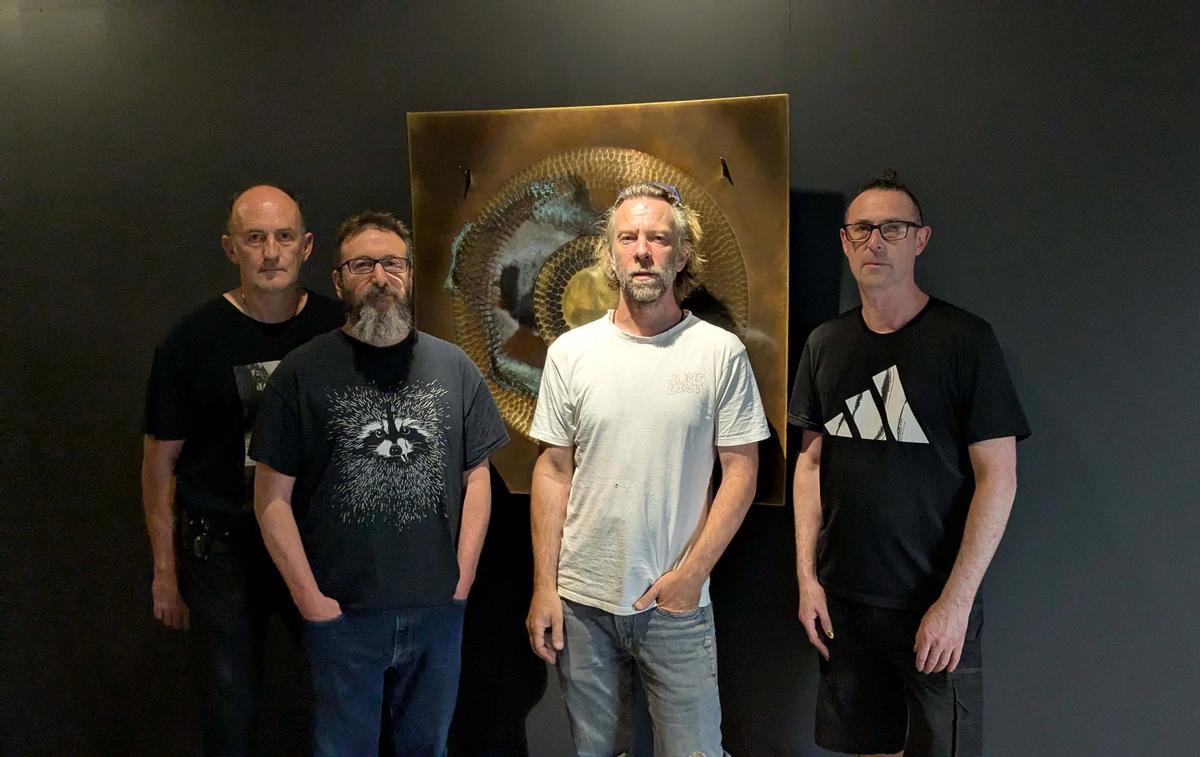Can an artist’s creative essence persist beyond death? In probing this question, a team of Australian artists and biological innovators has engineered a human “mini-brain” that composes a musical score in real time as audiences watch and listen.
The installation, titled Revivification, goes on view at the Art Gallery of Western Australia (AGWA) from 5 April.
Revivification consists of an incubator housing a lab-grown “in-vitro brain”. This “organoid” was grown from blood donated to the project by the late American experimental composer Alvin Lucier. Lining the walls are 20 large, curved brass plates. Signals from Lucier’s in-vitro “brain” are transmitted through transducers and actuators, striking the brass and creating sound.
The Revivification team is made up of the artists Guy Ben-Ary, Nathan Thompson and Matt Gingold with neuroscientist Stuart Hodgetts of the University of Western Australia (UWA).
“We were connected through our association with SymbioticA, the internationally renowned art and science research laboratory at UWA that unfortunately closed down in 2024,” the team tells The Art Newspaper in an email interview.
To bring the project into being, Lucier donated his blood the year before his death in 2021, and it was then reprogrammed into stem cells at Harvard Medical School. Those stem cells were then transformed by the Revivification team into cerebral organoids: three-dimensional structures that resemble a developing human brain.
“At a time when generative AI is calling into question human agency, this project explores the challenges of locating creativity and artistic originality,” the team says.
“Like many things that are important to us, it’s an impossible concept to measure. Perhaps its value cannot be judged by scientific protocols, yet it remains something that we as humans should place great value in.
“Revivification is an attempt to shine light on the sometimes dark possibilities of extending a person’s presence beyond the seemed finality of death.”
The Revivification team members were “internationally recognised leaders in bio-robotic art”, with past projects exhibited in premier venues such as the Venice Biennale, Ars Electronica and Mori Museum, according to a statement from the AGWA. The team has won awards from Prix Ars Electronica and the Japan Media Art Festival.
The team says it had been an honour to collaborate with “a true legend” like Lucier. “Despite his frailty at 89, his revolutionary spirit remained powerful. We established a relationship that went beyond the professional realm, exploring potential artistic projects together,” they say.
His personal enthusiasm was a driving force behind the project. “It was conceptualised with Lucier himself, focusing on audio resonance and reflection—phenomena he explored throughout his career,” the team continued. “Revivification was created with his full knowledge and consent; his donation of biological material was a conscious choice to participate in this posthumous collaboration.”
The team is “not necessarily expecting” the sounds made by the Revivification installation to resemble the compositions Lucier made in life. “The central question we want people to ask is: could there be a filament of memory that persists through this biological transformation? Can Lucier's creative essence persist beyond his death?” they say.
“What we've created isn't preservation or simulation, but a form of ‘postmortem play’ where Lucier’s biological material creates in unpredictable ways.”
On 5 April, the Revivification team will speak at AGWA about their journey to bring the music of Alvin Lucier “to life”.
• Revivification, The Art Gallery of Western Australia, Perth, 5 April-3 August


